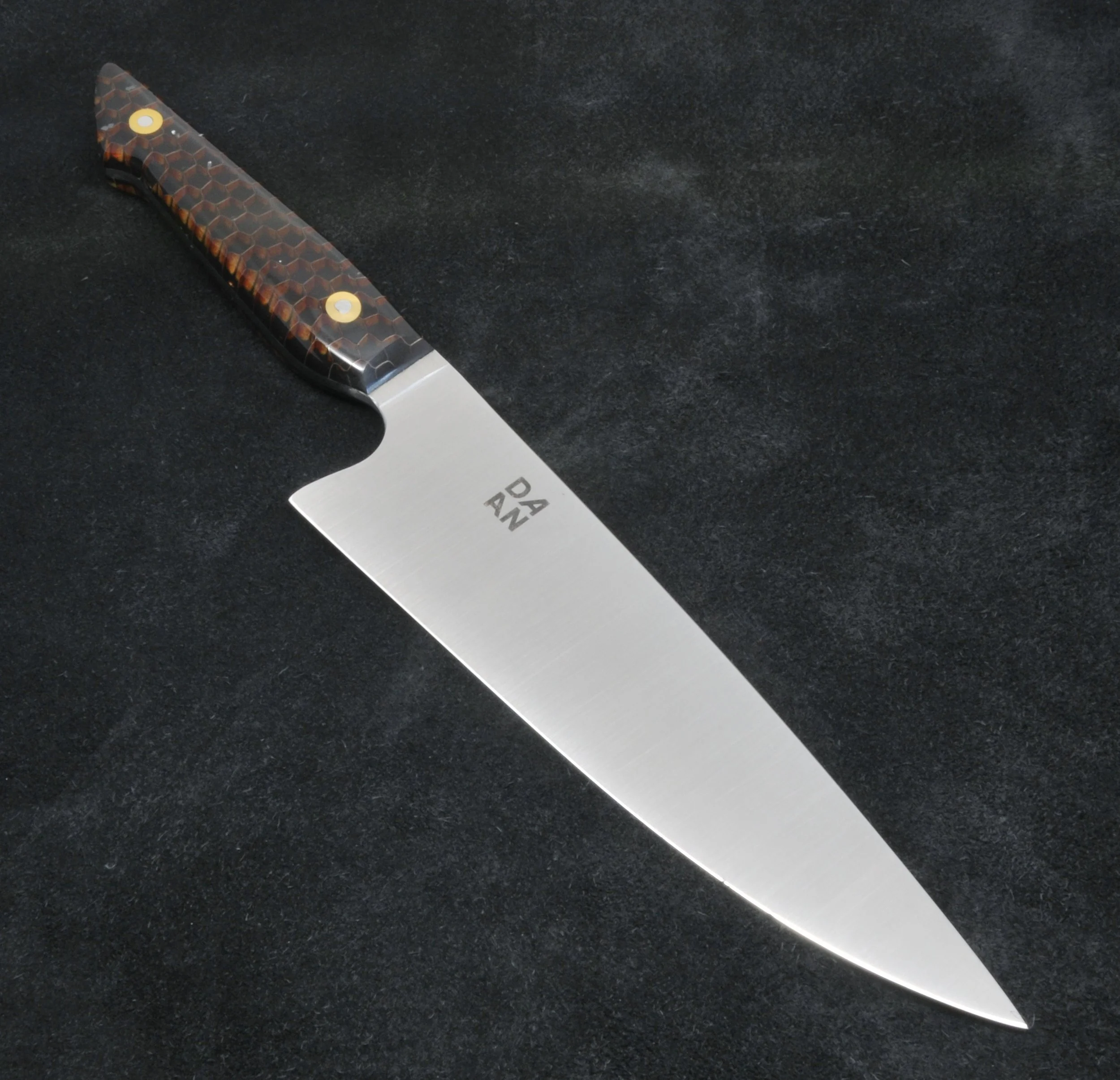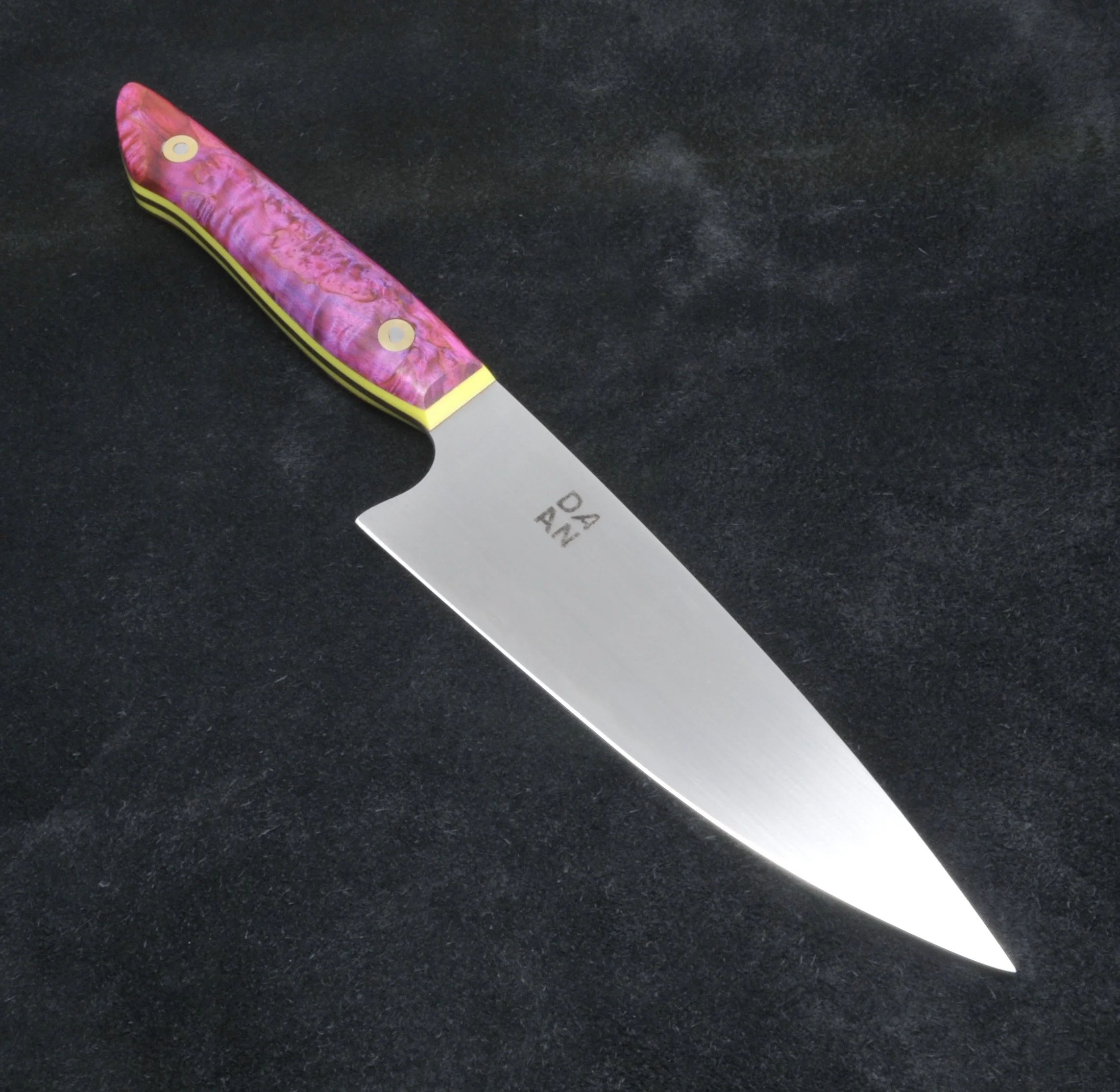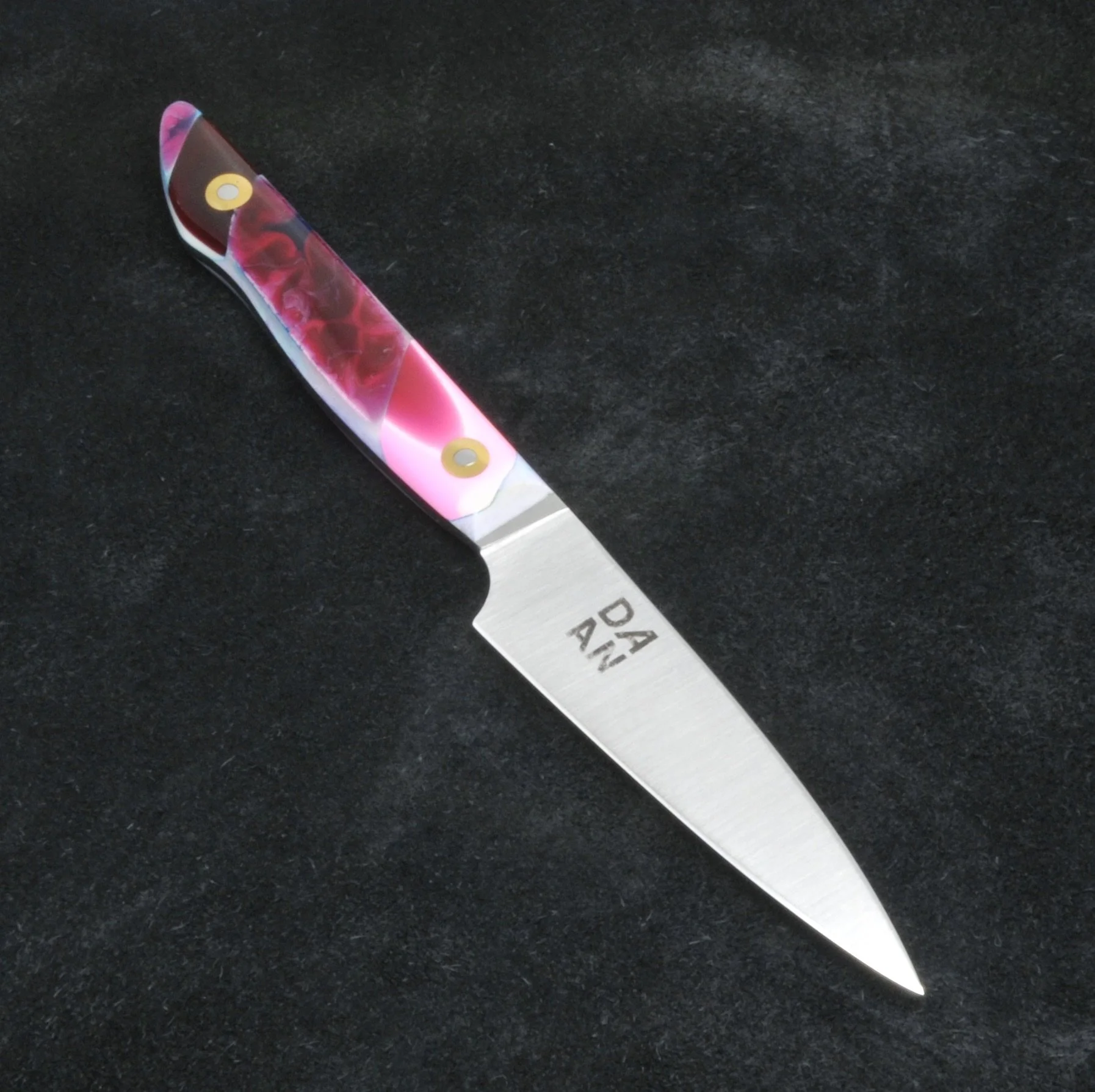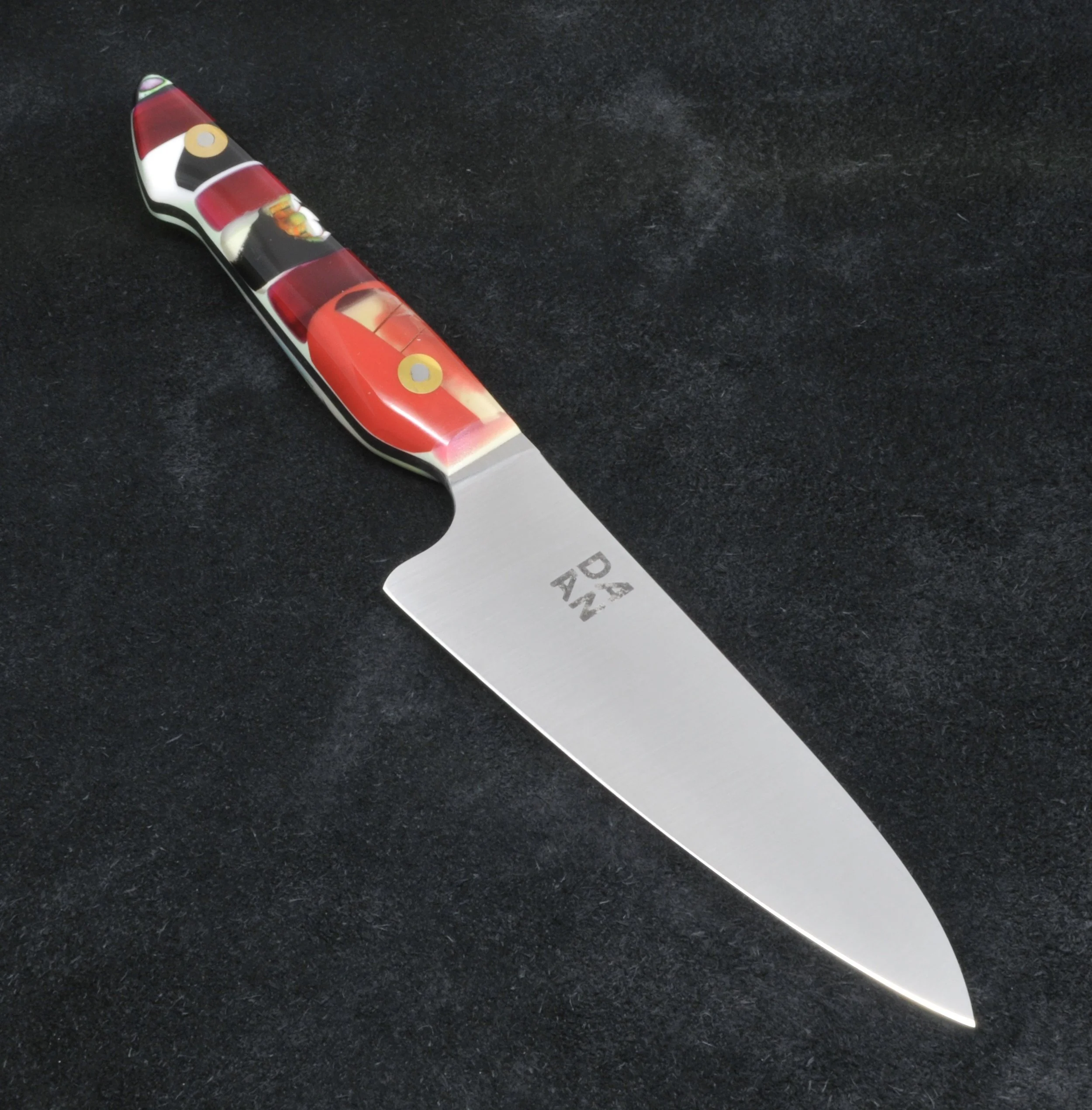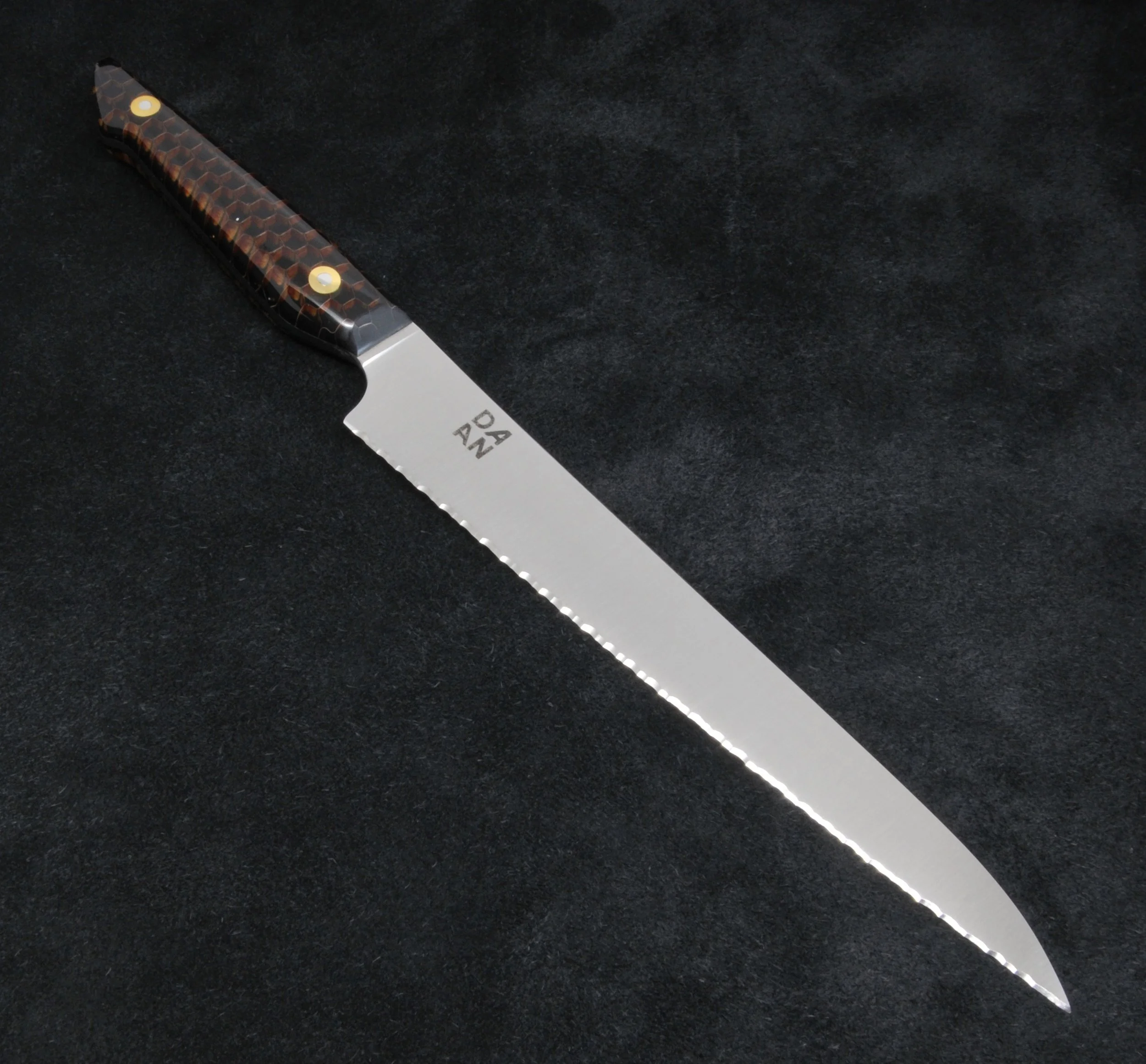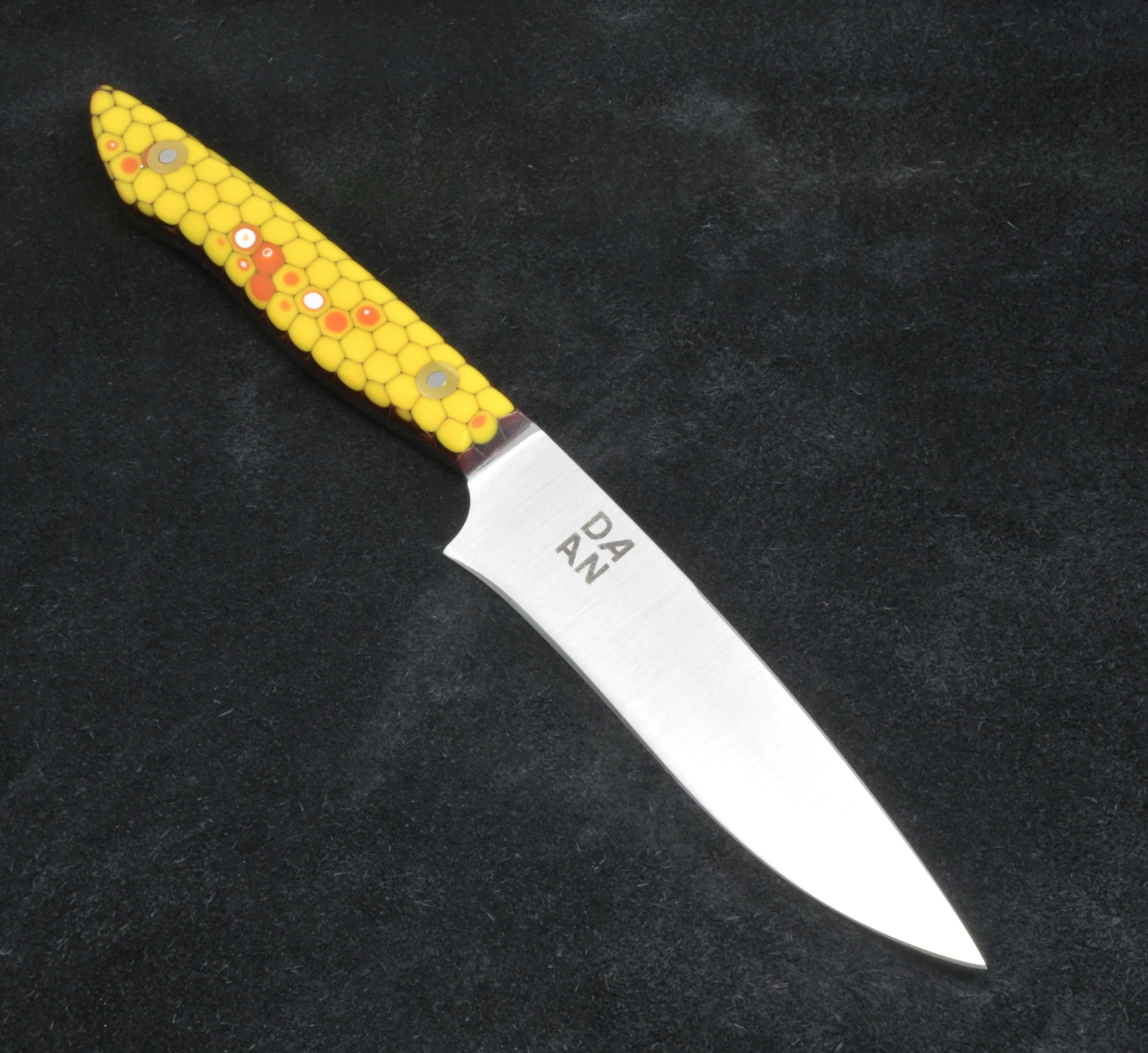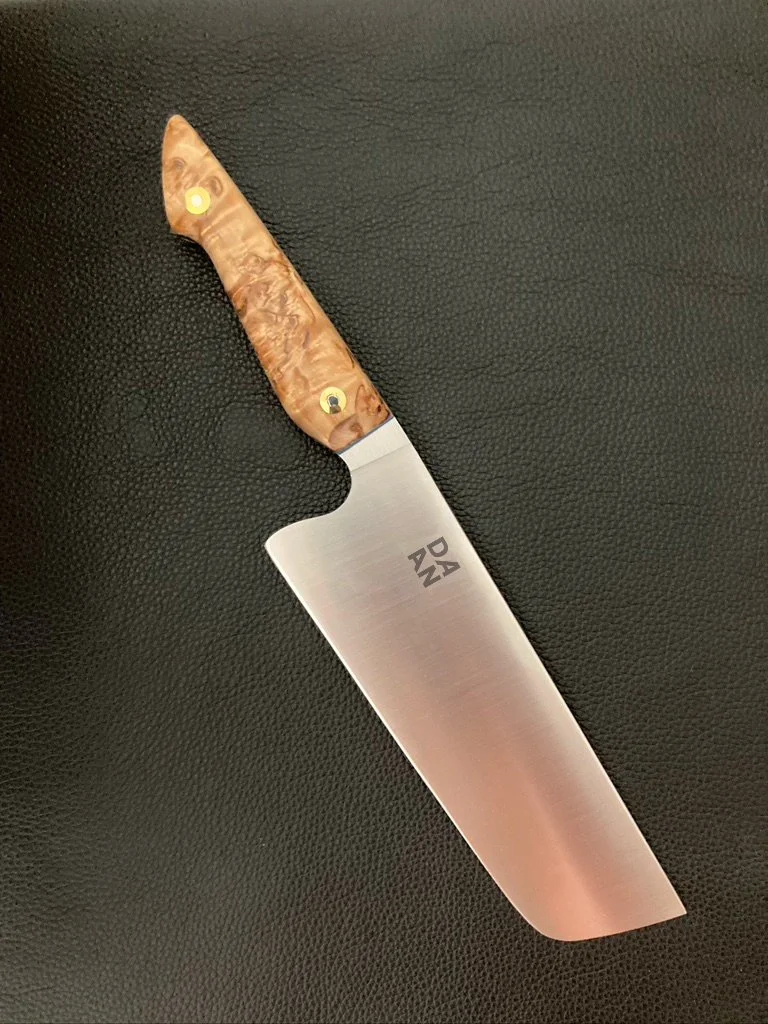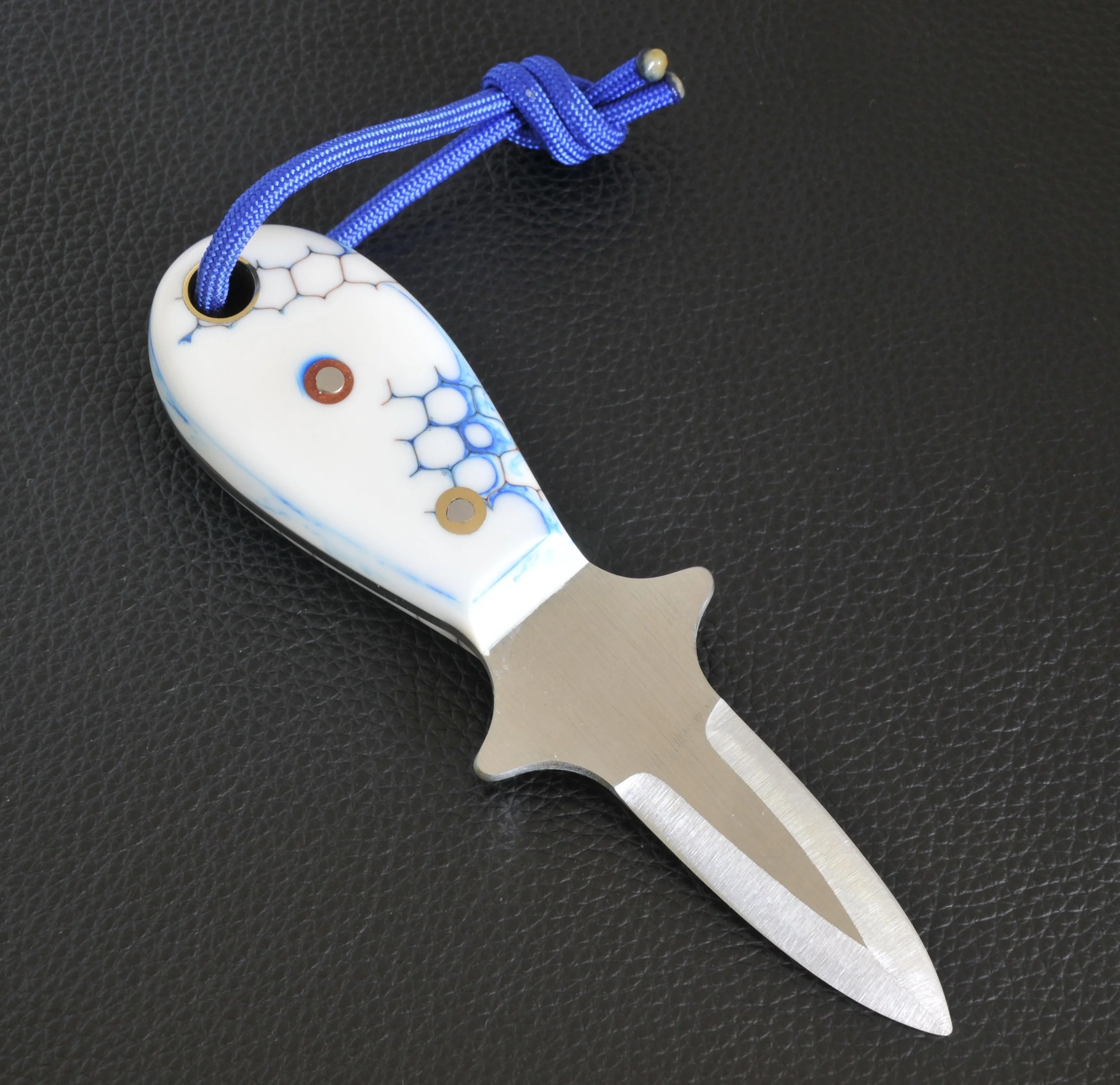The Models
These are the core models. The first five are listed by importance, with the Chef’s Knife and Agile Chef sharing the top position—depending on whether you prefer a slightly larger or more compact main knife.
All knives are made out of AEB-L razor steel.
1. CHEF KNIFE
A chef’s knife is the foundational all-purpose tool in any kitchen—designed to handle nearly every cutting task with ease and efficiency. Originating in France as the couteau de chef, it later evolved into the Western-style knife known today for its curved belly, broad blade, and balanced weight distribution.
Its shape allows for a rocking motion ideal for chopping vegetables and herbs, while the pointed tip lends itself to precision work like trimming meat or segmenting fruit. Whether dicing onions, mincing garlic, or breaking down poultry, the chef’s knife is the true workhorse of the kitchen.
In sum, the chef’s knife is the central piece of a cook’s toolkit: a single, versatile knife that can replace many others. If you only own one good knife, this is it—the tool that forms the backbone of both professional and home kitchens.
Blade lenght: 20 cm
Full lenght: 32.5 cm
Blade width at widest point: 5 cm
1. AGILE CHEF
This knife was created in response to the demand for a chef’s knife in a more compact form. The Agile Chef is a full-featured kitchen knife designed to be your primary cutting tool. Unlike larger chef’s knives, it emphasizes lightness and control without sacrificing versatility. With a 17 cm blade, it performs all the core tasks—chopping, slicing, mincing, and dicing—in a more responsive, easy-to-handle format.
Built for agility, it has balanced proportions and a refined weight that suit cooks who value precision and speed over heft. The curved edge supports a smooth rocking motion, while the tapered tip allows for detailed work. Whether you’re preparing vegetables, proteins, or greens, the Agile Chef delivers performance across a wide range of tasks.
If you’re a home cook deciding between a standard chef’s knife and this one, I always recommend the Agile Chef.
Blade lenght: 17 cm
Full lenght: 30 cm
Blade width at widest point: 4.5 cm
2. PARING
The paring knife is a small, precise kitchen tool designed for detailed cutting tasks. With a blade of 9.5 cm, it excels at peeling, trimming, and shaping fruits and vegetables—jobs that require accuracy and control.
Its compact size and lightweight design make it easy to handle, giving you the finesse needed for delicate work like tomatoes, segmenting citrus, or creating garnishes. The straight, sharp blade allows for clean cuts close to the skin, making prep faster and more efficient.
The paring knife is often the go-to for tasks that feel too small or intricate for a larger knife. It is widely regarded as the second most important knife in the kitchen after the chef’s knife.
In short, the paring knife is a versatile and indispensable companion—small in size but big in usefulness—for all your fine, in-hand cutting needs.
Blade lenght: 9.5 cm
Full lenght: 21.5 cm
Blade width at widest point: 2.5 cm
3. PETTY
A petty is a compact utility knife, bridging the gap between a paring knife and larger chef's knife. Originating in 19th-century Japan during the Meiji era, it was introduced as a smaller counterpart to the gyuto (Japanese chefs knife)
The petty is a versatile precision knife—larger than a paring but smaller than a chef’s knife—perfect for small, delicate, or in‑hand cutting tasks, and a must-have complement to your kitchen essentials.
After a chefs knife and a paring knife this is the 3rd most important tool in your knife collection.
Many home cooks who find a chef or even a agile chef too big of a knife, use this as their main kitchen tool.
Blade lenght: 9.5 cm
Full lenght: 21.5 cm
Blade width at widest point: 2.5 cm
4. BREADKNIFE
More than just for bread, this long, serrated knife handles everything from crusty loaves to dense, thick-skinned produce like celeriac and pineapple.
Unlike the typical half-moon-shaped teeth found on standard bread knives, the serrations on this blade resemble a row of fine razorblades. Each one is ground by hand and eye, resulting in a cleaner, more controlled cut—especially with softer bread, which often tears under coarser serrations.
Its long, narrow profile offers reach and stability, while the sharp, hand-finished teeth do the work with minimal pressure. Whether you're slicing crusty sourdough, tender brioche, or dense rye, this knife cuts cleanly without crushing the loaf.
Blade lenght: 21.5 cm
Full lenght: 35 cm
Blade width at widest point: 3.3 cm
STEAK KNIFE
A steak knife is meant to be used at the table—a tool for enjoying food, not preparing it. Typically, steak knives are slim and minimal, with more or less straight blades that make it hard to distinguish the spine from the cutting edge. This flat design often limits cutting to a horizontal sawing motion, which can feel awkward on the plate.
This knife takes a different approach. One of the first blades I designed, it’s modeled after tools made for cutting grass—where curve and motion work together. The well-rounded edge allows for a more natural, efficient cut through meat, using a gentle rocking motion rather than force.
In short, this is a steak knife designed not just to look elegant at the table, but to perform with real ease and precision. It’s the result of rethinking what a steak knife should do—and how it should feel in use.
Blade lenght: 13 cm
Full lenght: 25 cm
Blade width at widest point: 2.8 cm
NAKIRI/VEGETABLE KNIFE
The nakiri is a Japanese-style vegetable knife, recognizable by its straight spine, squared tip, and flat cutting edge. Though its shape may suggest a cleaver, this is not a chopping knife—it’s built for precision, not power.
With its thin, wide blade and flat edge, the nakiri is especially suited for herbs, leafy greens, and other soft vegetables.
Its tall blade also gives the user finger clearance and control—helpful when working quickly or with delicate bunches of herbs like parsley, basil, or chives.
In short, the nakiri is a dedicated vegetable knife—not for hard squashes or bones, but for focused, elegant prep. If you work with fresh herbs or want clean, repeatable cuts in your vegetable prep, this is the right tool for the job.
Blade lenght: 16 cm
Full lenght: 29.5 cm
Blade width at widest point: 5.5 cm
OYSTER
This is a sturdy oyster knife, designed for safely and efficiently opening oysters. The short, thick blade is made to withstand pressure without bending, allowing controlled entry between the shells.
Two small flared guards on either side of the blade offer grip and protection. They help the hand stay in place during use and provide a point of leverage when prying the shell open—especially useful when working with tougher or tightly closed oysters.
A brightly colored lanyard is attached to the handle to make the knife easier to find or hang on a hook.
Full lenght: 14.5 cm
BONING KNIFE
This boning knife is built for control and strength. With a stiff, narrow blade and a solid spine, it’s designed for precise work around bones, joints, and connective tissue—without flexing or giving under pressure.
Unlike more flexible boning knives, this one prioritizes stability. The firm blade allows for accurate, forceful cuts when separating meat from bone, trimming fat, or working in tighter spaces where precision matters.
This is a practical, no-nonsense knife made for structure and balance. It offers reliability where a softer blade wouldn’t hold up, especially when dealing with poultry, larger cuts of meat, or tasks that require a strong, steady hand.
Blade lenght: 11 cm
Full lenght: 24.5 cm
Blade width at widest point: 2 cm

